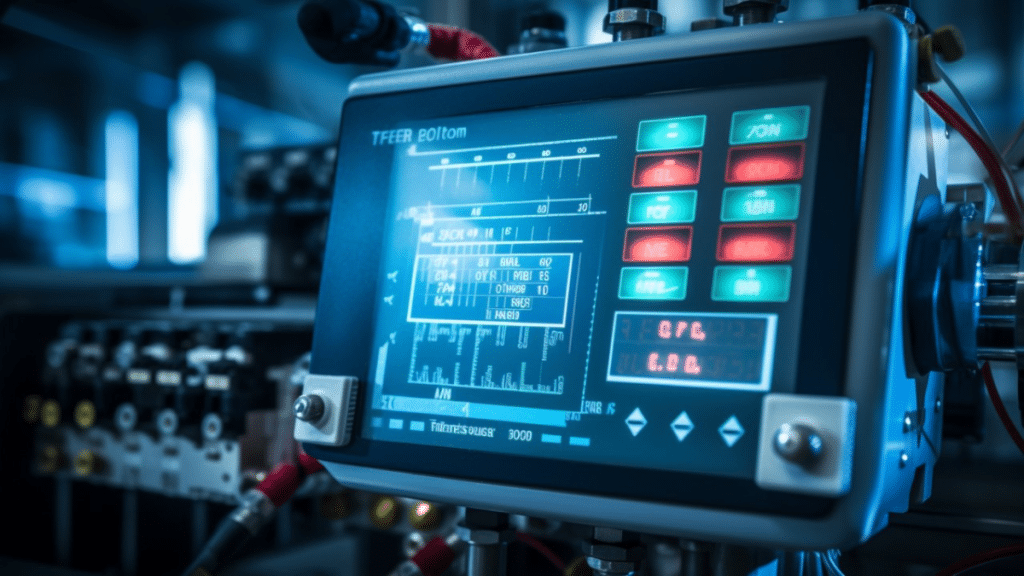Introduction: The Dawn of Intelligent Interaction
Traditional Human-Machine Interfaces (HMIs), such as buttons and touchscreens, have been staples in industrial control systems for decades. However, as industrial operations grow increasingly complex, these interfaces are no longer enough to meet the needs of modern manufacturing environments. The advent of AI-powered Augmented Reality (AR) interfaces promises a new way of interacting with machines—one that is context-aware, hands-free, and spatially intelligent.
The key to this revolution lies in the specialized electronic components that power these systems. These technologies enable seamless, real-time interaction with complex environments, bringing the digital and physical worlds together in ways never before possible. This article explores the critical electronics behind this shift, focusing on the components driving AI-AR interfaces in industrial settings.
The Brainpower: AI Accelerators for Real-Time Intelligence
To handle the complexities of AI inference in AR applications, traditional CPUs and GPUs often fall short due to their high power consumption and latency issues. This is where specialized AI hardware accelerators come into play, allowing for faster processing and more efficient performance in real-time.
Key Components:
- Neural Processing Units (NPUs) / Tensor Processing Units (TPUs): These dedicated chips are optimized for executing neural network algorithms, which are central to AI applications in AR. By handling matrix operations efficiently, NPUs and TPUs significantly improve processing speed while reducing power usage.
- Edge AI Chipsets: These chipsets combine NPUs with CPU/GPU cores to balance performance and energy efficiency. They are designed for on-device AI tasks such as object recognition, gesture tracking, and natural language processing, all of which are crucial for interactive AR interfaces.
As edge AI applications become more widespread, businesses integrating these systems must ensure they have access to reliable, low-power, high-performance processors. For example, components available at Iainventory PLC are ideal for these demanding tasks.
Seeing the World: AR Display Engines & Optics
One of the most important aspects of an AR system is the display technology that merges digital information with the real world. Sophisticated optics are required to project clear, realistic images onto the user’s field of view.
Key Components:
- Waveguide Displays: These transparent light-guiding optics direct light from micro-displays to the user’s eye. Their lightweight design makes them ideal for wearable AR devices.
- Micro-OLED / LCOS Micro-Displays: These high-resolution, compact displays generate the AR content, ensuring clarity and detail in the user’s view.
- Combiners & Beam Splitters: These components merge the real and digital worlds by mixing light in a way that ensures the AR content appears integrated into the physical environment.
- Eye Tracking Sensors: Used to adjust focus and enable gaze-based control, these sensors are critical for enhancing user interaction with AR content.
These optical systems are crucial for creating a seamless, immersive user experience, with factors like field of view, brightness, and resolution directly influenced by these components.
Sensing the Context: Multi-Sensor Fusion Hubs
For an AI-AR interface to be truly effective, it must be able to understand the user’s environment in real-time. This is accomplished through data fusion from multiple sensors, which enables the system to create an accurate spatial model and interpret user actions.
Key Components & Fusion:
- High-Resolution Cameras (RGB/IR): Used for image capture and depth mapping, these cameras provide essential visual input for AR applications.
- LiDAR/Time-of-Flight (ToF) Sensors: These sensors map 3D space, providing depth information crucial for placing digital content accurately in the real world.
- IMUs (Inertial Measurement Units): These devices, which include accelerometers, gyroscopes, and magnetometers, track motion and orientation, ensuring precise control in dynamic environments.
- Microphones: Used for voice commands and environmental awareness, microphones allow for hands-free operation in industrial settings.
The fusion of data from these sensors is processed by specialized Sensor Fusion Hubs, which combine the inputs into a coherent spatial model, enabling real-time, context-aware AR interactions.
Powering the Vision: Advanced Power Management Systems (PMS)
Battery life is a significant concern for wearable and portable AR devices. The key challenge is balancing the high power requirements of AI accelerators, sensors, and displays with the need for long-lasting performance in industrial applications.
Key Components & Challenges:
- Power Management ICs (PMICs): These chips manage power distribution across various components, ensuring optimal performance while minimizing energy consumption.
- Advanced Battery Technologies: High-density batteries, such as Li-Po cells, are essential for extending the operational time of AR devices without increasing size or weight.
- Thermal Management: Effective heat dissipation solutions, such as passive or active cooling, are necessary to prevent overheating during intense operations.
Efficient power management is essential to ensuring that AR devices are usable over long shifts while maintaining a comfortable, lightweight form factor.
Conclusion: The Synergistic Future
AI-powered AR HMIs represent a breakthrough in human-machine interaction, combining cutting-edge hardware components like AI accelerators, advanced optics, multi-sensor fusion, and efficient power management. These technologies work together to create intelligent, context-aware interfaces that drive key Industry 4.0 goals such as increased efficiency, improved safety, and reduced downtime.
For businesses looking to build or integrate these next-gen systems, sourcing reliable, high-performance components is essential. Advanced modules and specialized components, such as those available at https://iainventory.com/collections/modules, are crucial for ensuring successful deployments in industrial settings.
By understanding the key electronics that enable AI-AR interfaces, companies can make informed decisions and fully embrace the potential of this transformative technology. The HMI revolution is driven by these innovations, and the future of industrial operations is rapidly being shaped by these intelligent, hardware-driven solutions.
